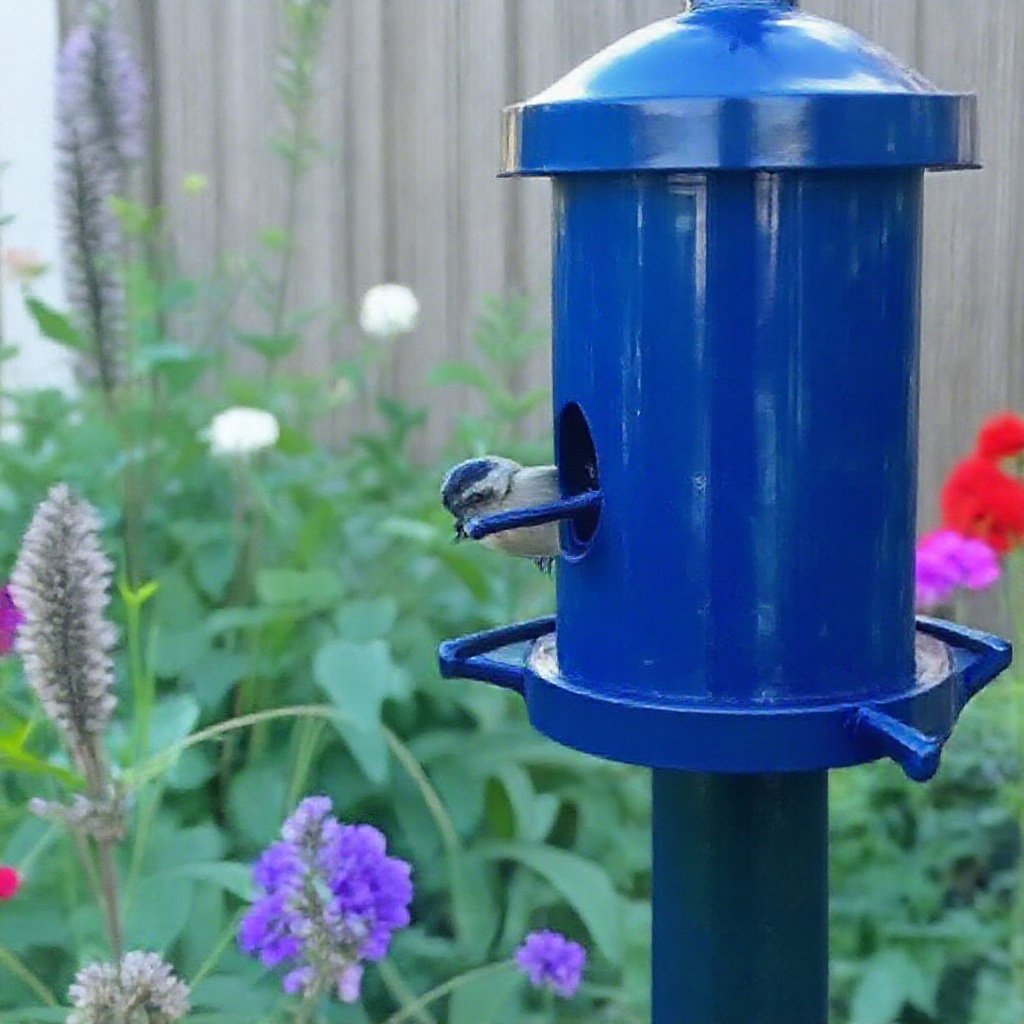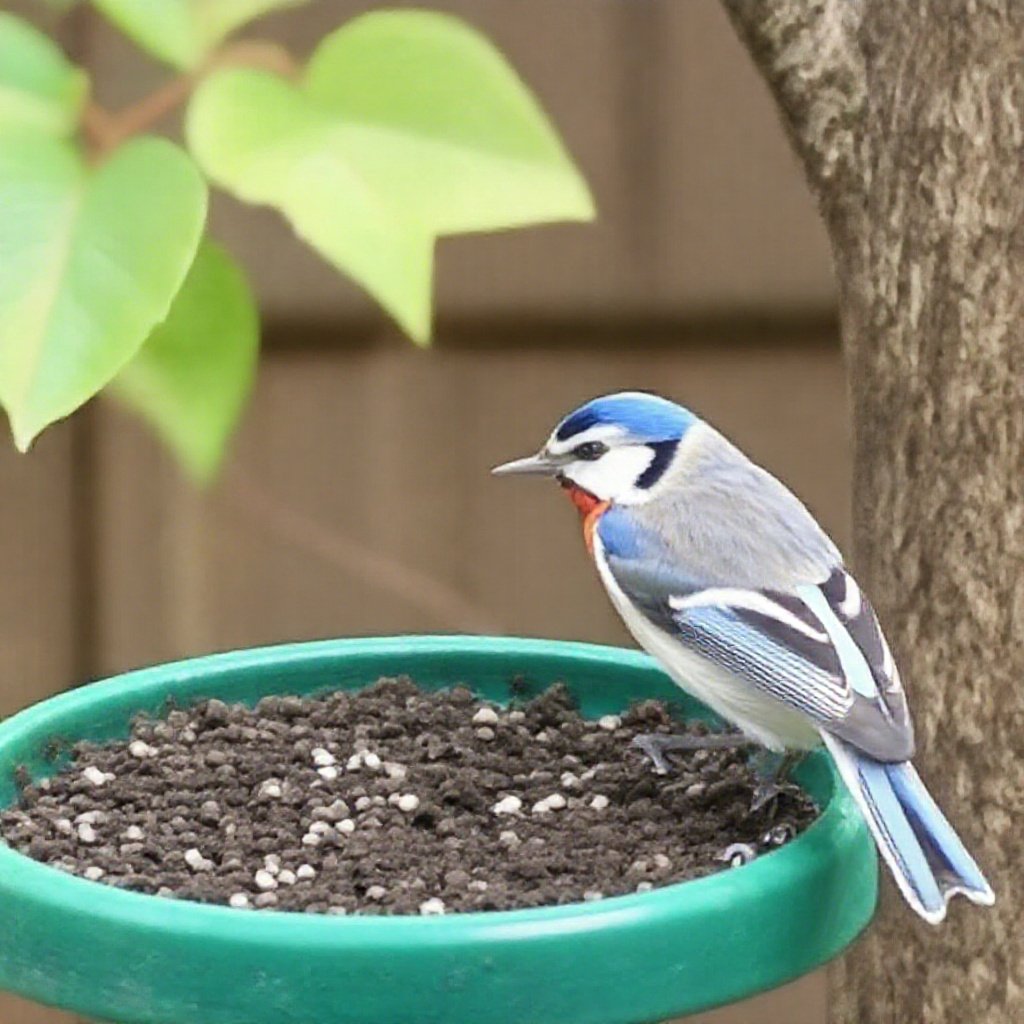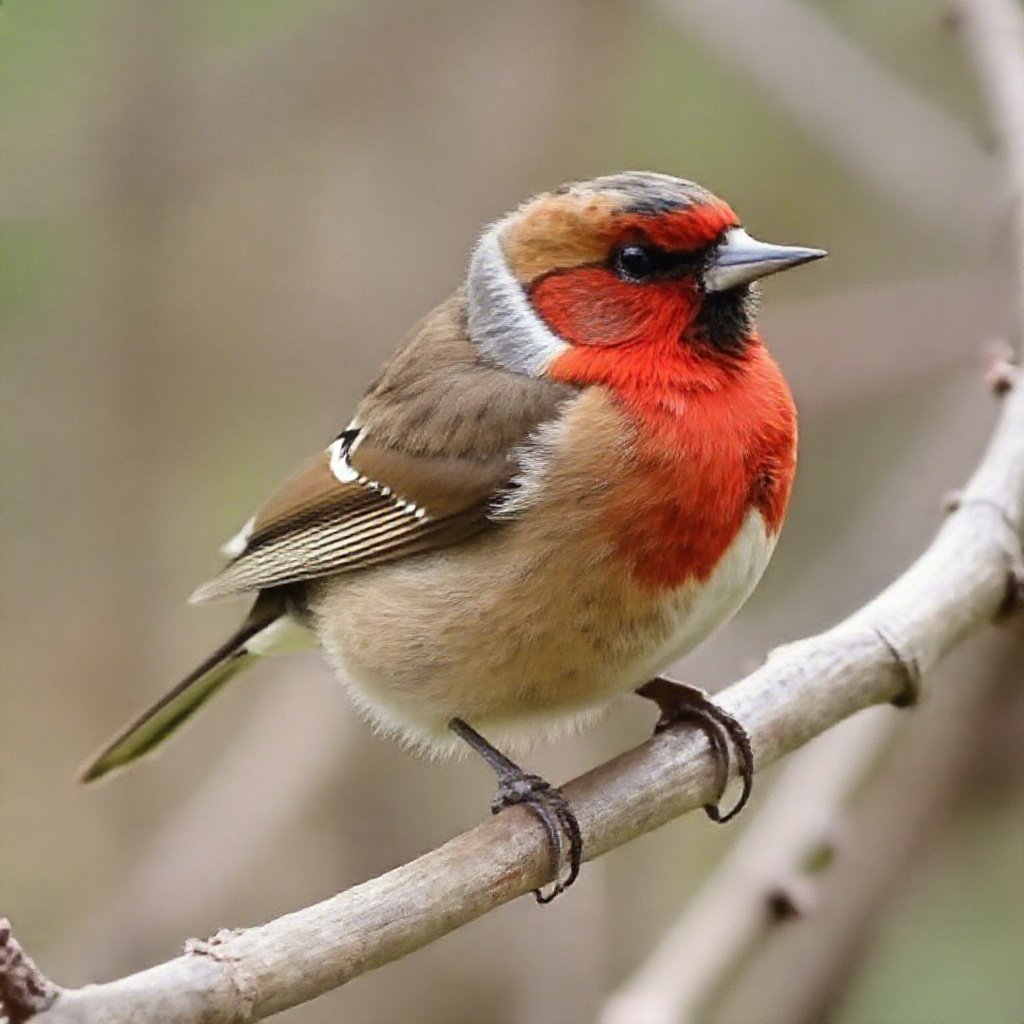Creating a Bird-Friendly Garden
Why Your Garden Should Welcome Birds
Turning your garden into a bird haven is more crucial now than ever. With urban sprawl gobbling up natural habitats, our backyards can become vital sanctuaries for our feathered friends. Native plants are the MVPs here—they’re low-maintenance and don’t guzzle water or need constant pampering (Audubon). This is especially handy as we brace for more droughts thanks to climate change.
Native plants are like the ultimate buffet for insects, especially caterpillars, which are bird superfoods. Native trees and shrubs host way more caterpillars than their non-native counterparts, giving birds the grub they need. By planting these local heroes, you’re not just feeding birds; you’re also cutting down on water use and carbon emissions. It’s a win-win for everyone.
Over 90% of native insects are picky eaters—they only munch on the plants they’ve evolved with over eons. So, by planting native flora, you’re also supporting pollinators like butterflies and moths, which are crucial for baby birds (Audubon).
Why Birds Are Good for Your Garden
Inviting birds into your garden isn’t just good for them; it’s great for you too. Birds help keep the bug population in check, pollinate plants, and spread seeds around. This means a healthier, more balanced garden ecosystem.
Plus, birds bring a splash of color and a symphony of songs to your outdoor space. Watching them flit around can be a calming, educational experience for both kids and adults. It’s like having a live nature documentary right outside your window.
Creating a bird-friendly garden also means you’re doing your bit for conservation. By offering food, shelter, and water, you’re helping birds cope with habitat loss and climate change. Native gardens, in particular, are like five-star hotels for birds, giving them a safe space to thrive.
| Benefit | What It Means for You |
|---|---|
| Pest Control | Birds eat bugs, so you can skip the chemical sprays. |
| Pollination | Birds help plants reproduce, keeping your garden lush. |
| Seed Dispersal | Birds spread seeds, boosting plant diversity. |
| Aesthetic Value | Birds add beauty and music to your garden. |
| Educational Value | Bird-watching is fun and informative for all ages. |

Ready to make your garden a bird paradise? Check out our articles on bird-friendly garden design and attracting birds to your garden. For more tips, dive into our guides on bird-friendly landscaping ideas and bird-friendly landscaping tips.
Giving Birds a Splash Zone
When we talk about making our gardens a haven for birds, water is a must-have. Birds need it for drinking and bathing, which keeps them healthy and their feathers in top shape. Let’s chat about setting up birdbaths and jazzing up water features to turn our gardens into bird magnets.
Setting Up Birdbaths
Birdbaths are a no-brainer for drawing birds to our yards. A steady supply of clean water keeps them coming back. Here’s how to set up a birdbath that’ll have birds flocking to your garden:
- Get the Height Right: Place the birdbath where birds can easily reach it but are safe from cats and other predators.
- Keep It Shallow: Water should be no deeper than 2 inches. Birds prefer shallow water for drinking and splashing around.
- Find the Sweet Spot: Put the birdbath in a shady, visible area. This keeps the water cool and makes it easy for birds to spot.
- Add Some Grip: Toss in some gravel or stones at the bottom to give birds a better grip.
- Perch and Protect: Add a nearby perch and some cover to keep birds safe while they bathe.
- Clean It Up: Regularly scrub the birdbath to prevent algae and keep the water fresh.
- Winterize It: In colder areas, use a water heater to keep the birdbath from freezing.
- Make It Move: Birds love moving water. Add a fountain or dripper to catch their attention (Happy Gardens).
Sprucing Up Water Features
Beyond birdbaths, we can make our gardens even more inviting with some cool water features. Here’s how:
- Pump It Up: A pump or mister that creates bubbling water will draw birds like a magnet. They love the sound of moving water.
- Keep It Warm: In cold climates, a heater or de-icer will keep water from freezing, ensuring birds have a drink all year round.
- Go Natural: Use rocks and plants around the water feature to make it look natural and give birds extra perches and hiding spots.
- Multiple Spots: Set up several water sources around the garden to attract different bird species.
- Stay Clean: Regularly clean and maintain the water features to keep algae at bay and the water fresh.
By adding these water features, we can make our gardens a bird paradise. For more tips on attracting birds, check out our article on bird-friendly landscaping tips.
Planting Native Species
Want to turn your garden into a bird paradise? Start with native plants. These plants give birds the food, shelter, and nesting spots they need. Knowing which plants are native to your area can make your garden a haven for our feathered friends.
Native Plants for Bird-Friendly Gardens
Native plants have grown up alongside local birds, making them perfect for supporting these species. Here are some top picks to make your garden a bird magnet:
Oak Trees: These giants, with their rugged bark and lobed leaves, can grow up to 80 feet tall. They support a whopping 557 species of butterflies and moths, which in turn feed countless birds (Audubon).
Pine Trees: With around 120 species globally, pine trees are a hit with 203 butterfly and moth species. Birds love snacking on the seeds hidden in their cones (Audubon).
Milkweeds: These plants are a favorite of monarch butterflies and their caterpillars. Birds like orioles and finches use the fluffy seeds to line their nests.
Goldenrods: These are pollinator magnets, supporting 115 butterfly and moth species. They attract birds like woodpeckers and chickadees that feast on insects.
| Plant | Supported Species | Benefits |
|---|---|---|
| Oak Trees | 557 butterfly and moth species | Shelter, food |
| Pine Trees | 203 butterfly and moth species | Seeds for food |
| Milkweeds | Monarch butterflies | Nesting materials |
| Goldenrods | 115 butterfly and moth species | Attracts insect-eating birds |

Why Native Plants Rock
Planting native species isn’t just good for birds; it’s great for your garden too:
Support Local Wildlife: Native plants offer the exact resources local birds need, from food to nesting materials and shelter.
Easy Care: These plants are used to the local climate and soil, so they need less water and fewer fertilizers.
Attract Pollinators: Native plants draw in butterflies and bees, which then attract birds that eat these insects. Goldenrods, for example, are a big hit with pollinators and birds alike (Audubon).
Boost Biodiversity: A mix of native plants supports a variety of bird species, making for a healthier ecosystem. Oaks and pines, for instance, support hundreds of butterfly and moth species, which are crucial for bird diets.
By adding native plants to your garden, you can create a thriving bird habitat. For more ideas on designing a bird-friendly garden, check out our bird-friendly garden design page. Also, explore our tips on attracting birds to your garden for more ways to make your outdoor space a wildlife haven.
Bird Feeding Tips
Feeding birds is a great way to make your garden a bird paradise. By offering food, you help local birds and get to enjoy a variety of feathered visitors.
Picking the Right Bird Feeders
Choosing the right bird feeders can make a big difference in attracting different birds and giving them the nutrition they need. Here are some common types of bird feeders and their perks:
| Feeder Type | Suitable For | Benefits |
|---|---|---|
| Hopper Feeders | Sparrows, Finches, and Cardinals | Holds lots of seed |
| Tube Feeders | Chickadees, Nuthatches, and Goldfinches | Keeps seeds dry |
| Suet Feeders | Woodpeckers, Jays, and Starlings | High-energy food |
| Platform Feeders | Doves, Jays, and Blackbirds | Good for various seeds and bigger birds |
Mixing up your feeders can cater to the tastes of different birds. For more tips on making your garden bird-friendly, check out our article on bird-friendly garden design.
Placing Bird Feeders the Right Way
Where you put your bird feeders is key to keeping birds safe and happy. Here are some tips:
Spacing: Spread out the feeders to attract more birds and reduce squabbles. This helps avoid crowding and fights among birds.
Window Collisions: Place feeders either close to a window (within three feet) or far away (thirty feet) to prevent birds from hitting the glass. Feeders too close or too far can cause accidents.
Predator Safety: Keep feeders out of reach of squirrels and give birds a safe spot to escape if predators like hawks or cats are around (Birdseed & Binoculars).
Clustering: Group feeders by type and the birds they attract. This reduces competition and lets shy birds have their turn.
By following these tips, you can make your garden a haven for many bird species. For more ideas on attracting birds, check out our article on bird-friendly landscaping ideas.
Building Birdhouses
Making birdhouses is a fun way to invite feathered friends into your garden. By giving birds a cozy place to nest, you help local bird populations and get to enjoy their company.
Picking the Right Birdhouse
Choosing the right birdhouse means knowing what different birds need. Here are some popular designs for various birds:
| Bird Species | Entrance Hole Size | Height (Feet) | Placement Tips |
|---|---|---|---|
| Bluebirds | 2 1/4″ x 1 3/8″ | 4-6 | Attach to a pole, sunny spot, face east, open habitat (Perky-Pet) |
| Robins, Barn Swallows, Phoebes | Platform with a border and back piece | 5-25 | Mount on a building or post, sheltered site, under eaves, over light fixtures, or on soffits (Perky-Pet) |
| Wrens, Black-capped Chickadees | No larger than 1 1/4″ | 5-10 | Attach to a tree, pole, or building, within 100 feet of woody vegetation (Perky-Pet) |
| Purple Martins | Multiple levels, rounded | 10-15 | Attach to a pole, paint white, set 60 feet from other obstacles (Perky-Pet) |
For more birdhouse ideas, visit our bird-friendly landscaping ideas page.
Installing Birdhouses: Tips and Tricks
Putting up birdhouses the right way is key to attracting birds and keeping them safe. Here’s how to do it:
Height and Placement: Different birds like different heights. Bluebirds love houses 4-6 feet off the ground, facing east in open areas. Purple Martins prefer their homes 10-15 feet high in open spaces.
Secure Attachment: Make sure birdhouses are firmly attached to poles, trees, or buildings. Protect them from predators with baffles or by placing them in hard-to-reach spots.
Weather Protection: Place birdhouses in sheltered spots to shield birds from bad weather. For example, mounting platforms for Robins, Barn Swallows, and Phoebes under eaves or over light fixtures gives extra protection.
Proper Orientation: Face birdhouse entrances away from the wind to keep rain and wind out. Black-capped Chickadees, for instance, like entrances that face away from the wind.
Regular Maintenance: Keep birdhouses clean and check them often. Remove old nests and debris to prevent parasites and diseases.
By following these tips, you can make your garden a bird paradise. For more advice on attracting birds, check out our bird-friendly landscaping tips page.
Keeping Birds Safe in Your Garden
Making your garden a haven for birds isn’t just about attracting them; it’s about keeping them safe too. Let’s talk about how to stop window crashes and protect birds from predators.
Stop Birds from Hitting Windows
Birds crashing into windows is a huge problem, with around 1 billion birds dying each year in the U.S. and Canada because of it. During the day, they see reflections in the glass and think it’s a place they can fly into. At night, city lights lure in migrating birds, making things worse.
Here’s how to help:
- Stick Decals or Film on Windows: These break up reflections, so birds see the glass.
- Close Curtains and Blinds: This cuts down on reflections.
- Move Feeders and Birdbaths: Place them either really close (under 3 feet) or far away (over 30 feet) from windows to reduce crash risks.
Protect Birds from Predators
Cats are the biggest threat to birds, killing about 2.4 billion birds each year in the U.S. (National Zoo). Here’s how to keep birds safe:
- Keep Cats Inside: This is the best way to protect birds. If your cat loves the outdoors, think about building a “catio.”
- Safe Nesting Spots: Put up birdhouses with guards to keep out cats and raccoons.
- Skip the Pesticides: Pesticides are bad news for birds. Over 1 billion pounds are used each year in the U.S., poisoning birds directly or through their food (National Zoo).
By following these tips, you can make your garden a safer place for birds. For more ideas on creating a bird-friendly garden, check out our articles on bird-friendly garden design and attracting birds to your garden.

My name is Michelle Warren, and I’m the founder of Peaceful Gardening. As a 10-year breast cancer survivor, I’ve discovered the profound therapeutic power of gardening. This journey has not only helped me recover but has also become my passion and a source of ongoing peace and joy.
Peaceful Gardening was born from my desire to share the healing benefits of gardening with others. Whether you’re facing health challenges, dealing with stress, or simply looking to connect more deeply with nature, this space is for you.
Over the past decade, I’ve cultivated not just plants, but a deep understanding of how gardening can positively impact mental health. I’ve worked with local community gardens, led workshops on mindful gardening practices, and collaborated with mental health professionals to develop gardening-based stress reduction programs.
Peaceful Gardening was born from my desire to share the healing benefits of gardening with others. Whether you’re facing health challenges, dealing with stress, or simply looking to connect more deeply with nature, this space is for you.
Here, you’ll find evidence-based advice on using gardening as a tool for mindfulness, stress relief, and emotional healing. I share personal stories, practical tips, and scientifically-backed information on how to create your own therapeutic garden space, no matter the size of your yard or balcony.
My mission is to help you discover the joy, peace, and healing that comes from nurturing plants and connecting with nature. Join me in exploring how the simple act of tending to a garden can transform your mental and emotional wellbeing.
Welcome to Peaceful Gardening – let’s grow together towards better mental health!”

